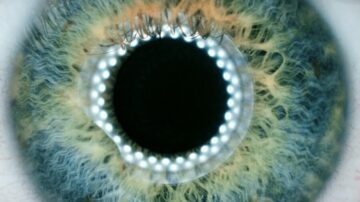Shelley Fan in Singularity Hub:
 Seeing is believing. Our perception of the world heavily relies on vision.
Seeing is believing. Our perception of the world heavily relies on vision.
What we see depends on cells in the retina, which sit behind the eyes. These delicate cells transform light into electrical pulses that go to the brain for further processing. But because of age, disease, or genetics, retinal cells often break down. For people with geographic atrophy—a disease which gradually destroys retinal cells—their eyes struggle to focus on text, recognize faces, and decipher color or textures in the dark. The disease especially attacks central vision, which lets our eyes focus on specific things. The result is seeing the world through a blurry lens. Walking down the street in dim light becomes a nightmare, each surface looking like a distorted version of itself. Reading a book or watching a movie is more frustrating than relaxing. But the retina is hard to regenerate, and the number of transplant donors can’t meet demand. A small clinical trial may have a solution. Led by Science Corporation, a brain-machine interface company headquartered in Alameda, California, the study implanted a tiny chip that acts like a replacement retina in 38 participants who were legally blind.
Dubbed the PRIMAvera trial, the volunteers wore custom-designed eyewear with a camera acting as a “digital eye.” Captured images were then transmitted to the implanted artificial retina, which translated the information into electrical signals for the brain to decipher. Preliminary results found a boost in the participants’ ability to read the eye exam scale—a common test of random letters, with each line smaller than the last. Some could even read longer texts in a dim environment at home with the camera’s “zoom-and-enhance” function. The trial is ongoing, with final results expected in 2026—three years after the implant. But according to Frank Holz at the University of Bonn Ernst-Abbe-Strasse in Germany, the study’s scientific coordinator, the results are a “milestone” for geographic atrophy resulting from age.
More here.
Enjoying the content on 3QD? Help keep us going by donating now.
